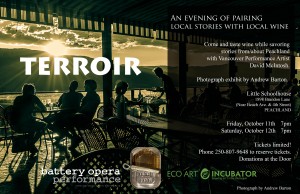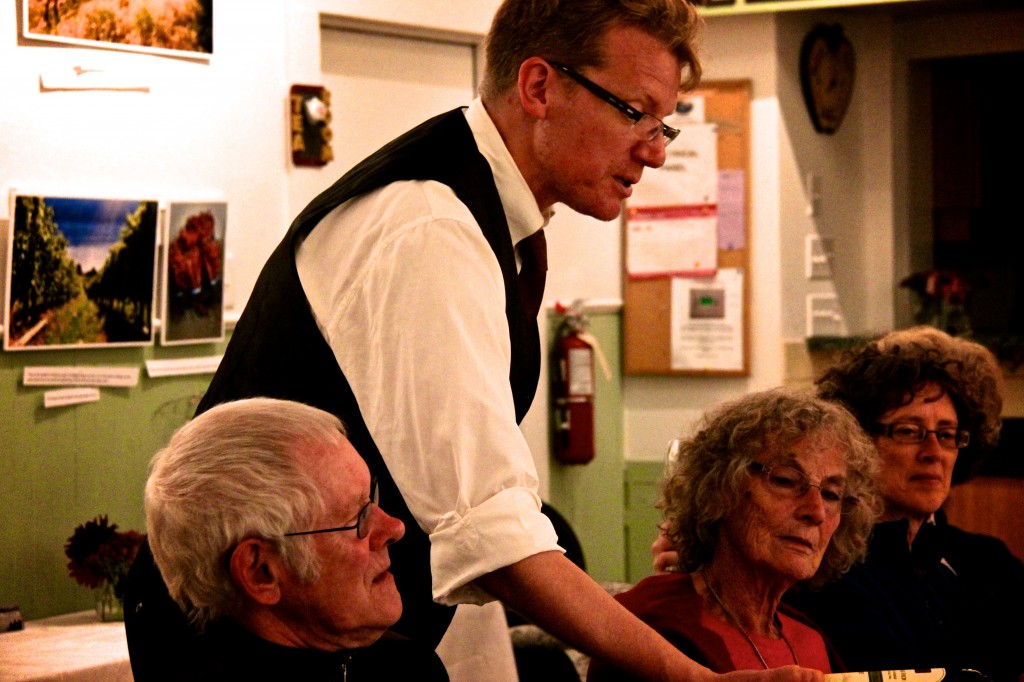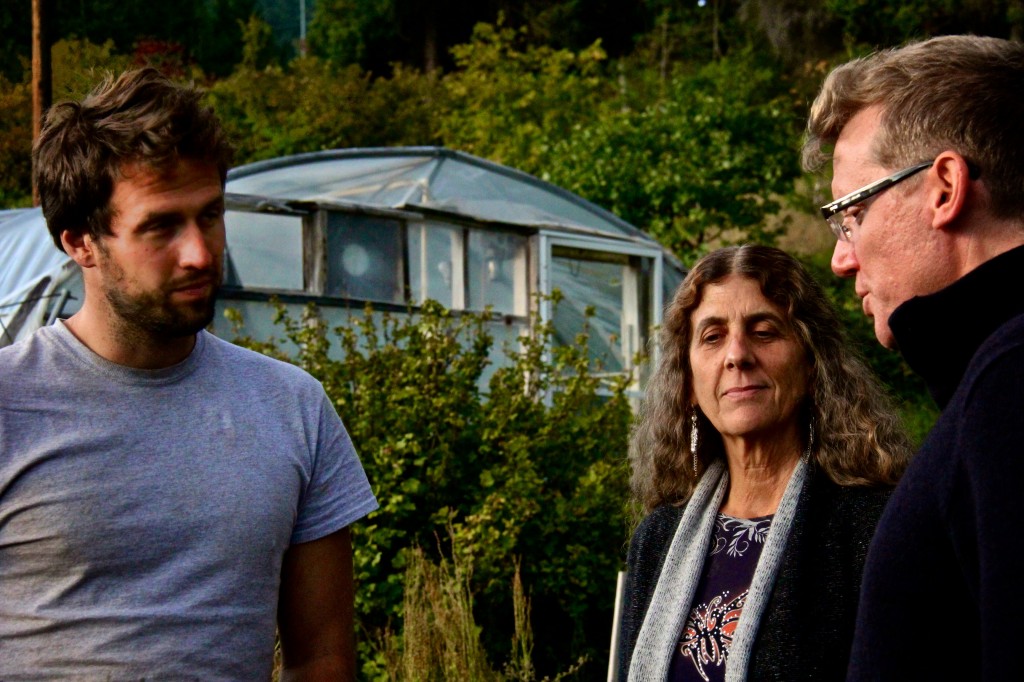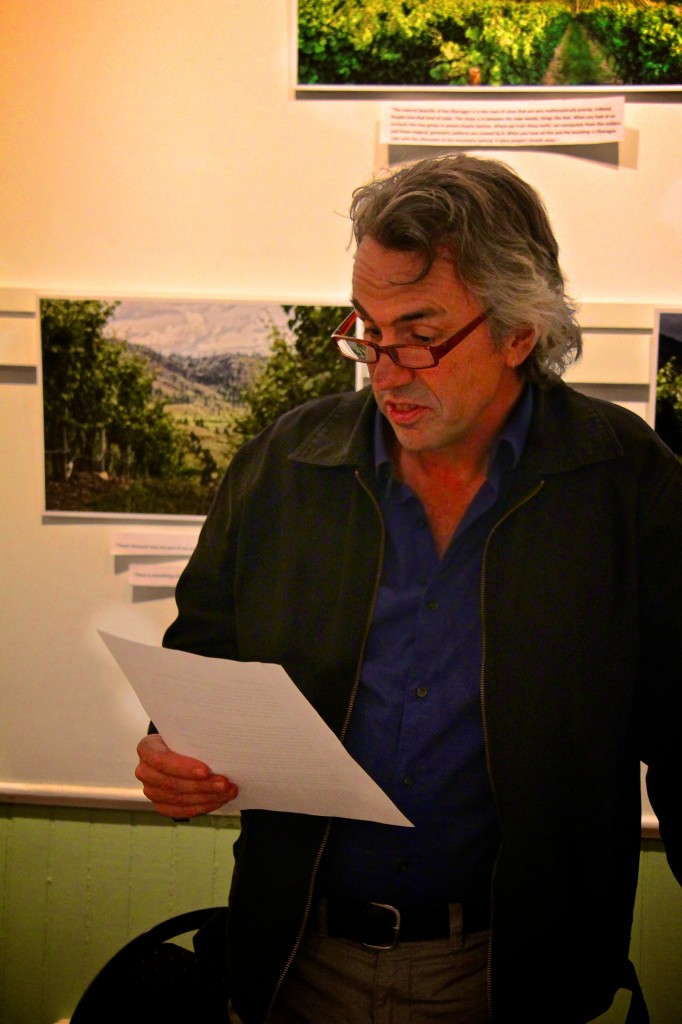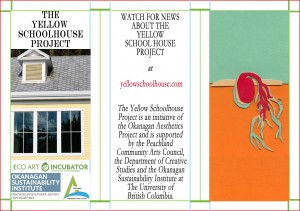COMMUNITY ENGAGEMENT/ ECO ART
Co-Creator/Facilitator: Denise Kenney (with Nancy Holmes)
The research question of the Okanagan Aesthetics Project is: “Can artists, in collaboration with the community, identify an Okanagan aesthetic and can this aesthetic be articulated powerfully enough for such a vision to drive sustainable and environmentally sensitive development?” It is difficult to define a sense of place, and even more difficult to attempt to capture that sense of place in built environments, in art, in landscapes, in lifestyle choices of all kinds. Our project focuses on the bioregion of the Okanagan to research how we can deeply explore ideas of a local aesthetic, and generate a process that can begin to define it. Like all bioregions, the Okanagan is both a “geographical terrain and a terrain of consciousness” (Berg and Dasmann, as qtd. in Buell 83); thus, the valley is an ideal place for artists (explorers of the terrain of consciousness) and geographers (investigators of geographical terrain) to engage in a deep discovery of sense of place.
Using our expertise as artists, we intend to tap into the senses of diverse stakeholders of this region, specifically non-design expert community members and winery owners. The first group is rarely consulted about aesthetic choices of their environment; the second group has taken on the challenge of generating a locale aesthetic with little meaningful engagement with the actual place. These wineries are proliferating and, in a sense, “colonizing.’ In marketing campaigns for the area, the geography itself becomes the commodity in the case of the fetishisation and marketing of wine production (Aguiar, Tomic, Trumper 133).
The Okanagan Aesthetic project proceeds along two converging paths with two very different methodologies and resources. One path consists of artist-run interactive installations designed to use immersive and participatory activities to generate discussion, visions, manifestos, and artworks from the grassroots of our many valley communities. The other is a visual analysis and interview process with winery designers. The analysis of these constructed and designed vineyard aesthetics provides the “flip side” to the visions and views of the larger valley community elicited by a group of local artists.
A bioregion, as Michael Vincent McGinnis defines it, “represents the intersection of vernacular culture, place- based behavior, and community” (3). We do not think of community as an existing social relation, but as a call or appeal to a collective praxis.
Community based art then can be approached as a projective enterprise, rather than a descriptive enterprise, wherein a provisional community can be produced within the specific context instigated, either by an artist or a cultural institution (Kwon 159).
We are, in essence, instigating this provisional community in order to gather locally generated perceptions of aesthetic value in a way that bypasses the usual methods of community consultation. Rarely do people living in a place get to express feelings about what they love and dislike about their home in a joyful, curious, and visceral exercise of discovery.
Our methods for the series of artist-run interactive installations are what Grant Kester calls “dialogic” or conversational works of art that emphasize process rather than product, relationship rather than authorship. In different Okanagan communities, we provide a series of kits and optional activity prompts for community groups and individuals to use. These optional prompts are designed to trigger sensorial and intuitive responses to place, rather than cerebral ones. Because community encompasses human as well as more-than-human inhabitants, we encourage activities that promote interface with natural as well as manufactured surroundings. One kit, for example, suggests the participant create a smelling installation using mason jars, other prompts incorporate walking, soundscapes, recipes, collecting and observing. From the many submissions, an interactive gallery is assembled where community members can share and discuss or dispute their responses. One local artist in each community coordinates local events, works with community groups, and invites specific cohorts and demographics.
At the same time, a geographer analyzes the aesthetic of the Okanagan wine industry and the role of the wine industry in constructing that aesthetic. The Okanagan wineries are already making interesting aesthetic decisions regarding design, landscaping architecture, culinary taste, storytelling, and visual and performing arts. We are interested to find out how the wineries’ stories and design decisions coincide, collide, or enrich the local and community-developed aesthetic once we begin to ask community members what they value.
- Aguiar, Luis, Tomic, Patricia, and Trumper, Ricardo. “Work Hard, Play Hard: Selling Kelowna, BC, As Year-round Playground.” The Canadian Geographer 49.2 (2005): 123-139.
- Buell, Lawrence. The Future of Environmental Criticism: Environmental Crisis and Literary Imagination. Maldon MA: Blackwell Publishing, 2005.
- Kwon, Miwon. One Place After Another: Site Specific Art and Locational Identity. Cambridge: MIT Press, 2002.
- McGinnis, Michael Vincent, Ed. Biorgionalism. NY: Routledge, 1998.
PEACHLAND PILOT PROJECTS
TERROIR An evening of pairing local stories with local wine
PEACHLAND: October 11 & 12, 2013
Savoring stories from/about Peachland with Vancouver Artist David McIntosh. Photography exhibit by Andrew Barton.
For one week in October, performer David McIntosh searched out Peachland stories and sampled wine from Peachland vineyards. He then paired the stories he discovered with local wines tasted. Taking advantage of McIntosh’s training as a sommelier and the ergonomics of serving wine, this unique storytelling performance allowed for the consideration of our bodies as vessels of myth, history, lies, desire and geography.
Andrew Barton’s photography took another kind of look at “Terroir”— the exhibit was an interactive display that invited guests to “pair” quotes from local vineyard proprietors with stunning photographs of Okanagan wineries.
The event was sponsored by Innerfish Performance Company, the Eco Art Incubator and the Okanagan Sustainability Institute.
VISIT THE PROJECT SITE.
Yellow Schoolhouse Project
The Yellow Schoolhouse Project, part of the Okanagan Aesthetics Initiative
The goal of the Yellow Schoolhouse Project is to make art and generate conversation about Peachland and the Okanagan. A series of artist-run, creative community projects will focus on how Peachland residents experience their place and also allow for people to imagine future possibilities for development and growth in their community. The Yellow Schoolhouse Project will provide an opportunity for participants to re-explore and re-imagine their community and communicate these ideas to others.
We are hoping Peachland, through The Yellow Schoolhouse Project, can be our pilot project, to help us experiment with how art can explore this question. We are inviting artists in the Peachland Arts Council to collaborate with us by participating in various creative projects that concentrate on the themes of preservation (mason jars), growth (seed packets), and connection (postcards).
The Yellow Schoolhouse Project has two main facets: provocations and workshops. The UBC facilitators will provide provocations as a means to engage community members in small projects. We see the gallery as one key location for “picking up” instructions for provocations, but also we hope to involve some other local businesses and sites. The second facet involves workshops led by local artists wherein a small group will work together on various activities. UBC facilitators will provide Peachland artists with a list of workshops and provide the artists with honoraria and funds for supplies.
The Yellow School House Project might also feature a communication flyer board where community members can read and respond to one another’s ideas and an anonymous project drop-box. In the gallery space, we envision an ongoing exhibition that showcases the creations of the provocations and workshops, and a photo essay about the aesthetic values of Okanagan wineries created by a UBC geographer.
